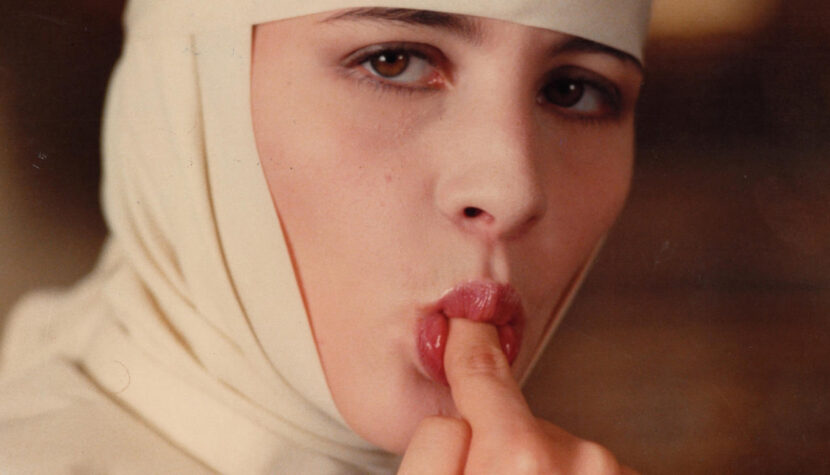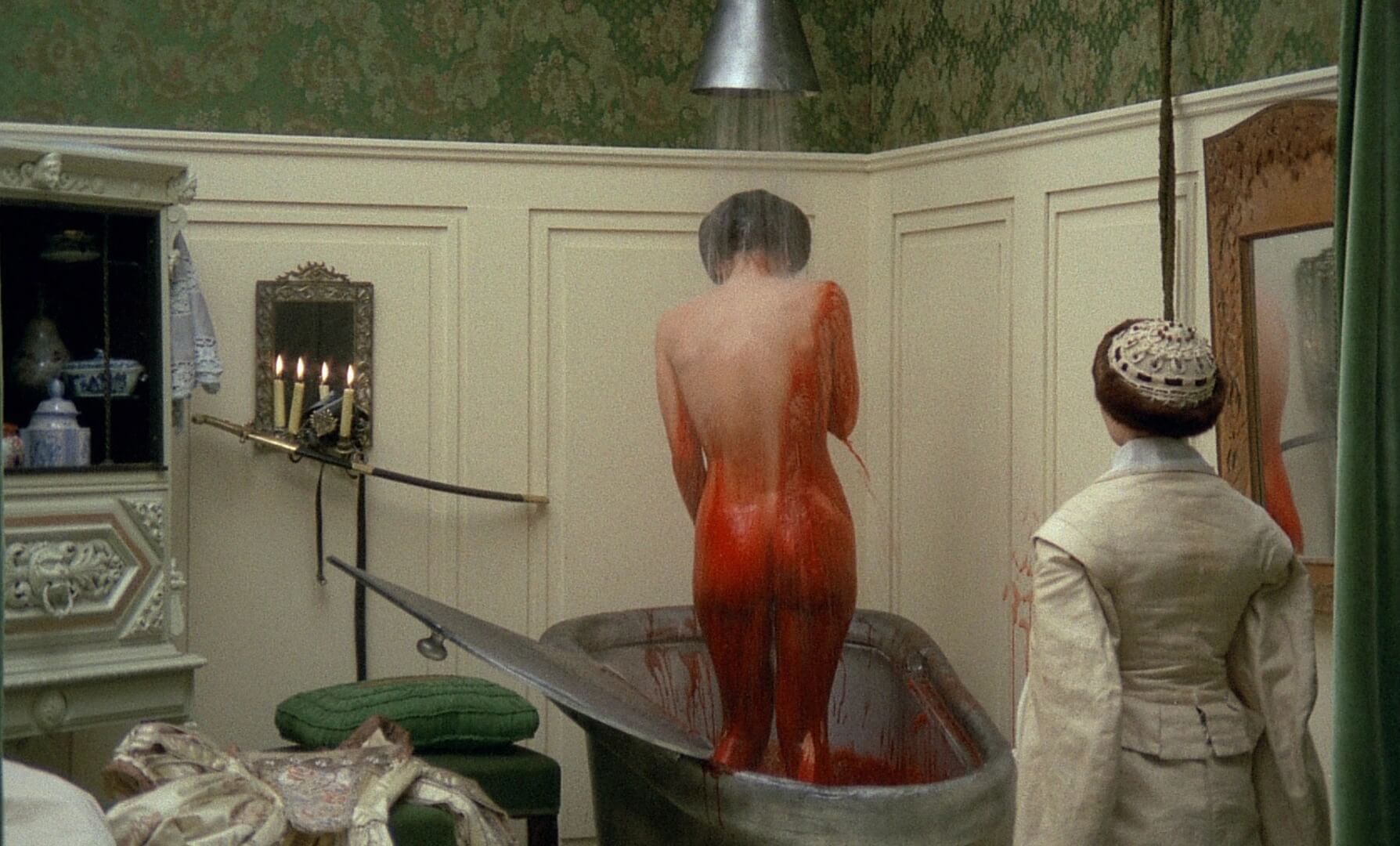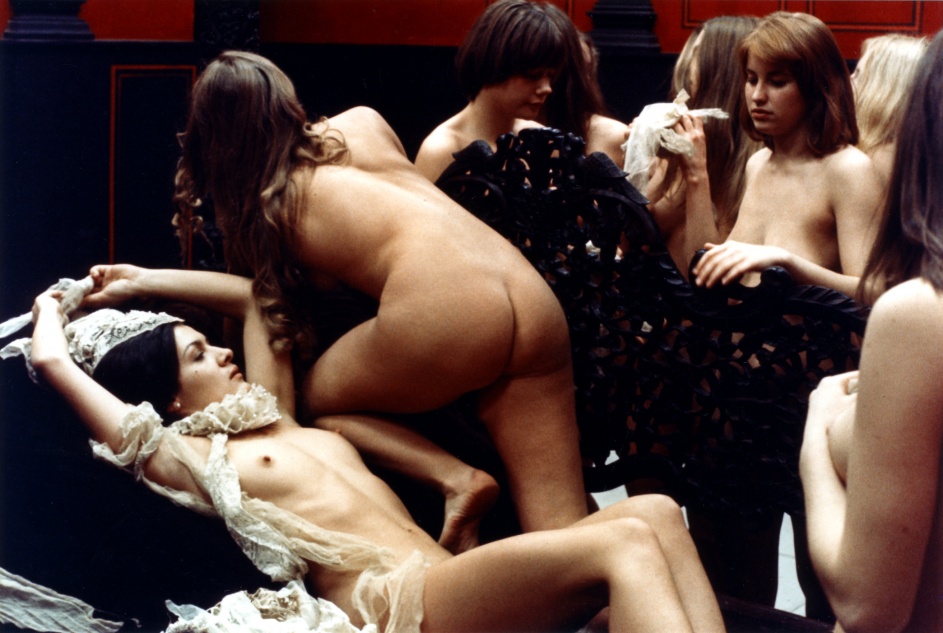All sins and eccentricities of WALERIAN BOROWCZYK. From avant-garde animation to erotic cinema

Thanks to his grotesque and surreal animations and sublime erotic films, full of firm breasts and hairy wombs, he stunned some, and made others blush.
The Beginnings

He was born on October 21, 1923 in Kwilcz near Poznan. He studied painting and graphics at the Academy of Fine Arts in Krakow, and in the meantime he made short amateur experimental, documentary and non-camera films (painted directly on film). Above all, however, he was a respected graphic artist. In the first half of the 1950s, he practiced political criticism and published his satirical drawings in magazines. After moving to Warsaw in 1954, he co-founded the Polish School of Posters, designing for theaters and films. He created posters for films such as Ingmar Bergman’s The Seventh Seal, Raymond Bernard’s Court of God, Otakar Vavra’s Council of Constance, Benito Alazraki’s Roots and Jerzy Kawalerowicz’s The True End of the Great War.
Walerian Borowczyk was a multi-instrumentalist, practiced many genres of art, but it was animation that was deeply engraved and rooted in his work. And we should start with 1957. At that time, several films were made that were considered manifestos of changes in Polish animation. The history of its beginnings is still divided into the period before and after Borowczyk-Lenica. Two respected graphic artists, a graduate of the Academy of Fine Arts and an architect by profession, were soon to change the way of looking at the art of moving pictures. Their short animation Once Upon a Time… became a loud harbinger of the innovative Polish school of animation. This work had no script, it was realized with the help of a bizarre and despised clipping technique. Above all, however, it broke with the traditional narrative in favor of a loose and free sequence of images. As Jan Lenica recalls:
We intended to make a film for children using simple means. Animated papers, newspaper cutouts, crayon drawings. We were drawn in by the possibilities of abstraction and pure nonsense.

This is how a simple story about an inconspicuous black spot on four legs was created. It encounters colorful scraps of paper on her way, pretends to be Charlie Chaplin, dances to the rhythm of jazz music, and finally ends up in a museum, enjoys the view of Mona Lisa and drowns in an abstract composition. This animation was an absolute novelty. It was unlike anything that had been created in the Polish backyard so far. It was fun, no-frills fun. A simple artistic joke devoid of any allegorical meaning.
A year later, one of the most enigmatic animated films in the work of the Borowczyk-Lenica tandem was made. The last joint, but also the most important. House (Dom) paved the way for the international careers of both artists, winning the main prize at the International Experimental Film Competition in Brussels. The mysterious and impenetrable animation sparked a lively discussion during which one viewer remarked that it gave the impression that it was filmed on Mars. In response, Borowczyk only announced “I am from Mars. House is a sequence of surreal images composed, as the co-author himself suggests, like a collection of poems. In subsequent sequences, the viewer sees fighting swordsmen from old photograms, an animated wig that drinks milk and breaks a glass, figures from old photographs and engravings, and finally a woman who tenderly caresses and kisses the mannequin’s head. The work of the Polish duo is a combined film, using both acting and various animation techniques: cutouts, collage, animation of objects, strongly inspired by the French avant-garde.
https://youtu.be/ErcrS8WnRZM
House gave a new, more open and capacious form to Polish animation for adults, although it was not received as warmly and enthusiastically as in Brussels. Certainly, however, its modest creators managed to raise the status of native animation to the rank of serious and poignant art. It was not only a form of little value and despised, understood as creativity intended for children, without any major artistic and visual ambitions.
Borowczyk’s bizarre, avant-garde circus did not rest on its laurels. The artist continued to create his bizarre and extravagant art. Free, intermedia, independent. For example, School (Szkoła) from a series of animated images. It shows the absurd drill of a man-robot, composed of a uniform and a rifle, who – when night falls – dreams of women’s legs dancing the can-can. It is full of absurd, almost surreal humour. The whole reveals opposition to military drill and blind obedience, which deprives a man of his personality.
Walerian Borowczyk has treated animated film as a form of high art since the beginning of his activity. No wonder that in Walt Disney and his magical world of childhood dreams he found his greatest enemy, a kind of contradiction to his ideas. He charged it with many sins, including the burdensome pursuit of realism or the transformation of animation into industry. A literal, pedantic drawing in Disney movies was a betrayal of the imagination and a betrayal of the animation itself for the Pole. A programmed message, rejecting an open structure, encouraging multiple interpretations.
Among other works there are Rewarded Feelings, The Theater of Mr. and Mrs. Kabal or Granny’s Encyclopedia in 13 volumes.
France
Let’s take a quick glimpse of Paris in 1959, when the artist made his first film abroad in collaboration with the French multimedia artist Chris Marker. The extremely vivid, slapstick film Astronauts tells the story of a constructor-inventor and his faithful owl, who embark on a journey full of unusual and surprising adventures in a cottage spaceship. A work that flirts with Dadaism and romances with the cinema of Georges Méliès perfects the technique of photographic animation.
The culmination of Borowczyk’s animated work was the animated film Infernal Scherzo from 1984, brimming with the creator’s erotic fascinations, which he poured not only into animated images. A spicy, bold story about the love between the devil and an angel. The rosy womb of delicate Purea does not amaze anyone, or at least it should not. After many years of play and controversy caused by the director in the field of feature films, viewers got used to his bold, erotic images.
Erotica
Boro, because that’s how he was called in France, abandoning animations switched to acting and erotic cinema. From 1959, he created on the Seine, and in 1968 he directed the first feature film, Goto, Island of Love (Goto, l’île d’amour). Since then, he has focused on three attributes that will hover over his films: lust, carnality and sin. And his muse will always be a woman – delicate, sensual. Over time, the director will earn the title of a pioneer of artistic erotic cinema. Or a provocateur who dazzles with ordinary pornography in his films. Throughout the entire period of his work, the artist refuted similar allegations of his erotic antagonists. His vision of cinema is perfectly illustrated by a statement from a conversation with Andrzej Markowski, conducted in the Kino magazine in 1975.
Erotica, sex is one of the most moral aspects of life. Eroticism does not kill, does not annihilate, does not encourage evil, does not lead to committing a crime. On the contrary: it soothes manners, brings joy, gives fulfillment, gives selfless pleasure.
These words undoubtedly referred to the artist’s flagship work, Immoral Tales, shot a year earlier. Stories of a young man who lyrically charms his submissive cousin, comparing the art of fellatio to the coming tide. About a vampire who arranges stuffy, lesbian orgies in her Hungarian bloodbath, or about a girl who indulges in erotic ecstasy. However, before Borowczyk punishes her heroine for furious masturbation with a cucumber in a cramped room full of holy images, he slowly and precisely studies every inch of her milk-white body. He will explore her hips, breasts, wrists and hot cheeks, looking for the most sensual and stimulating details. Thanks to bold close-ups of soft lips, eyes and fingers, the director creates an extremely exciting and intimate atmosphere. It is not intended only to stimulate sexually, but to draw attention to the beauty of the body – a sensual instrument. He paints a picture of François La Rochefoucauld’s passion, whose quote opens the film:
Love with all its delight is made even more delightful by the way it is expressed.

In his most important work, the director manifests female eroticism in relation to various taboos: sexual initiation, religious ecstasy, blood lust or incest. He filled the artistically tasteful stagings with a large dose of sensual eroticism, so they could not do without controversy and indignation. The film, which was banned in France, was released to theaters only after protests.
In his subsequent films, including The Beast from 1975 and the first Italian production, Behind Convent Walls from 1977, Borowczyk explores the primal desires of man, dressing them once in the tufted fur of a monster with a huge penis, able to constantly gush semen, and other times in the habit of a passionate nuns. Scenes of wild beast hunting naked, defenseless virgins in the forest and their subtle (as possible) intimate close-ups are to remind us that everyone is born with specific desires, which can only be temporarily tamed thanks to social and ideological conditions. Even deep faith and divine providence are unable to satisfy the thirst for love and bodily sensations. In the monastery, in addition to songs of praise, the sounds of delight are constantly resounding. In these paintings, sex is the beginning of considerations about human nature. A constant battle of culture and nature, body and spirit, to attract and shock the viewer. Thus, Borowczyk gained the ambiguous fame of the creator of erotic cinema. In some circles also the fame of the soft-porn classic. It is no wonder that many of his films have been banned in various countries over the years, subjected to brutal censorship cuts and reworked.

Despite the controversies accompanying the reception of Borowczyk’s subsequent feature films, we always deal with great visual imagination and great creative inventiveness. The artistic education of the director is noteworthy here. Every detail, every frame is thought out and strictly composed. Like a painting that a patient painter is trying on. The director unscrupulously combines film activity with artistic activity. His sophisticated style, carefully selected color palette, carefully selected frames, diverse stage design and classical music served primarily to show the beauty of erotic close-up, the subtlety of the female body, desire and sensuality. Promoting the idea of sensual cinema. He devoted his highly controversial fictional works to these goals. He rejected traditional morality, baring all taboos, treating pleasure and desire as the basic forces of life.
However, not all of the Pole’s films had to emanate nudity or pornography. At the beginning of his adventure with feature cinema, in 1971, Boro made Blanka. At that time, the production could not be produced in the homeland of the creator, so this adaptation of Juliusz Slowacki’s drama Mazepa was shot in France. The titular Blanka, played by the director’s wife, Ligia, is a beautiful, young and innocent woman married to an old baron. During the visit of the royal retinue, the lady’s beauty captivates the amorous ruler and his servant Bartolomeo. Borowczyk’s subtle staging closer to a fairy tale, the lyrical and oneiric cloak imposed on it, make Blanka an extremely disturbing costume drama. Muted color palette, medieval austerity and music from the era, inspired by the medieval songbook Carmina Burana. The artist perfected each of his films, intertwining realism with a certain dose of impressionism. Sensuality does not manifest itself here with naked bodies, but with love intrigues and silent desire.

Walerian Borowczyk claimed many times that there are no stages in his work, and he would need 300 years to implement all his ideas. He came up with all his films simultaneously, and only for technical reasons he had to shoot them one after the other. He also did not break with the visual arts. He painted, created scenography for his films, sometimes posters. Even outstanding, professional cinematographers had to fully submit to him. At the end of his life, however, he began to pursue other youthful dreams – writing books. Devil’s Anatomy is a series of sensual stories, and My Polish Years is an attempt to settle accounts with the land of his youth. He died in Le Port Marly on February 3, 2006. As a great scandalist and a great artist. And to this day, it has not been decided which of them was bigger.

